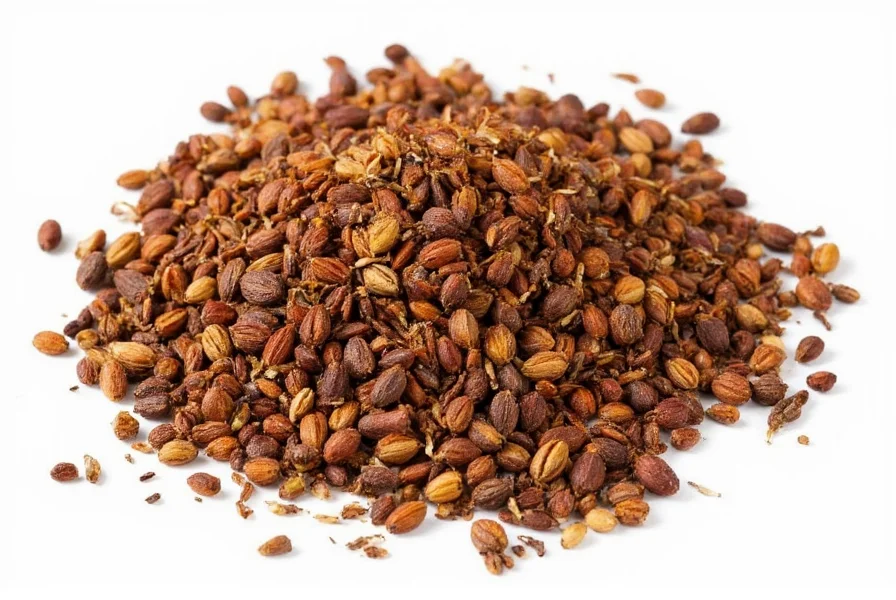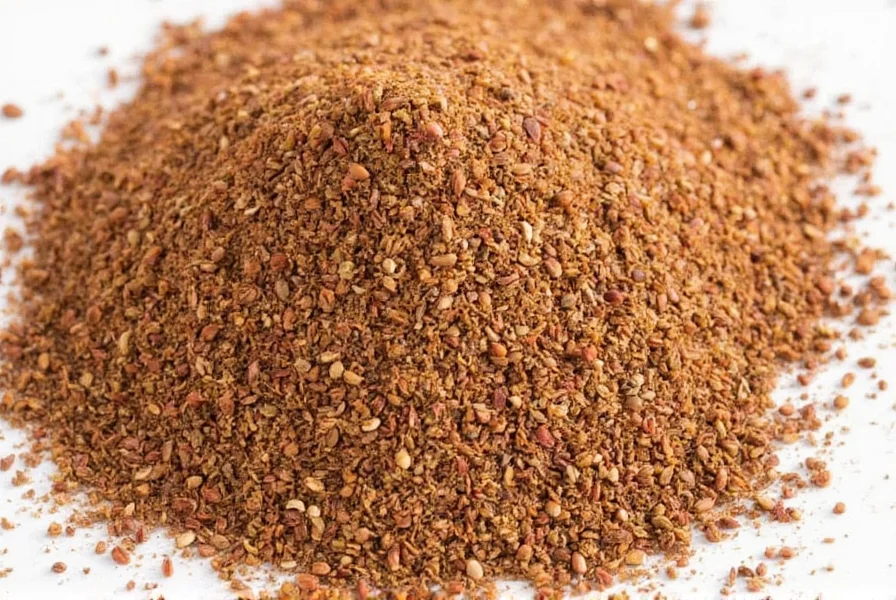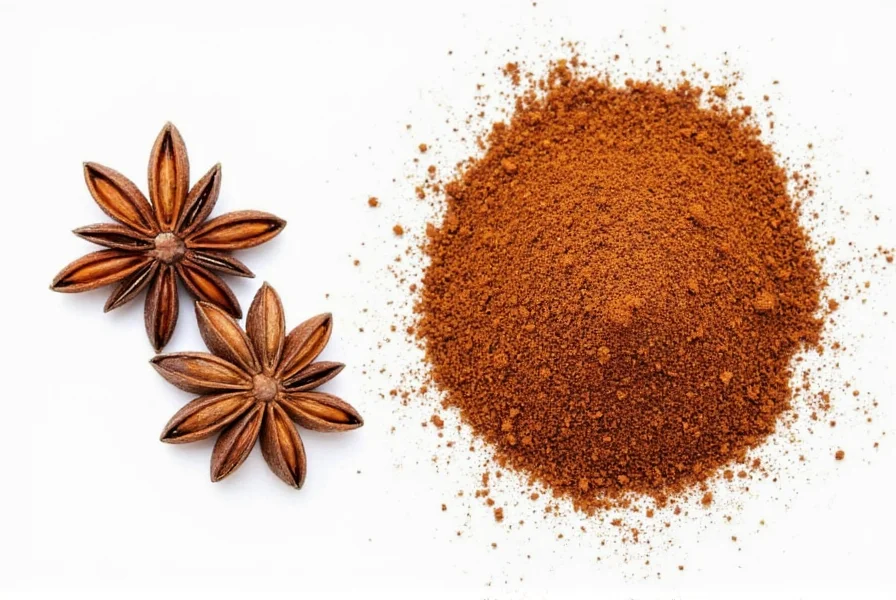Anise spice (Pimpinella anisum) stands as one of the world's oldest cultivated herbs, with historical records tracing its use back to ancient Egyptian and Roman civilizations. Unlike its frequently confused counterpart star anise, true anise comes from a delicate annual herb that produces small, grayish-brown crescent-shaped seeds packed with aromatic compounds.
Botanical Characteristics and Growing Conditions
Anise plants typically grow 12-24 inches tall with feathery leaves and small white flowers that develop into the familiar seed pods. The plant thrives in warm climates with well-drained soil and requires approximately 120 days to reach maturity. Commercial anise production occurs primarily in Spain, Mexico, Bulgaria, and India, where ideal growing conditions yield the highest quality seeds with optimal essential oil content.
Flavor Profile and Chemical Composition
The distinctive taste of anise spice comes primarily from anethole, which constitutes 80-90% of its essential oil content. This compound gives anise its characteristic sweet, licorice-like flavor with subtle notes of fennel and parsley. Additional compounds including estragole, limonene, and pinene contribute to its complex aromatic profile. When evaluating anise seed quality, look for seeds with a strong aroma and uniform grayish-brown color, as these indicate freshness and optimal essential oil content.
| Compound | Percentage in Essential Oil | Flavor Contribution |
|---|---|---|
| Anethole | 80-90% | Sweet, licorice-like |
| Estragole | 2-10% | Subtle anise, tarragon notes |
| Limonene | 1-3% | Citrus undertones |
| Pinene | 0.5-2% | Pine-like freshness |
Distinguishing Anise from Similar Spices
Many consumers confuse anise spice with star anise and fennel, though these represent distinct botanical species with different flavor profiles. True anise (Pimpinella anisum) produces small, oval seeds, while star anise (Illicium verum) comes from a tree and features distinctive eight-pointed star-shaped pods. Fennel seeds, though similar in appearance, have a milder, sweeter flavor profile. Understanding these differences proves essential when following recipes that specifically call for anise spice uses in cooking, as substitution can significantly alter the final dish's flavor.
Culinary Applications of Anise Spice
Anise seeds feature prominently in Mediterranean, Middle Eastern, and Latin American cuisines. Professional chefs value anise for its ability to enhance both sweet and savory dishes. In baking, anise adds complexity to biscotti, pizzelles, and traditional holiday cookies. Savory applications include seasoning for roasted meats, particularly pork and duck, and flavoring for Mediterranean fish stews. The spice also serves as a key ingredient in classic liqueurs including ouzo, absinthe, and sambuca. For optimal flavor release, toast whole anise seeds before grinding, as this process activates the essential oils without burning the delicate compounds.
Health Benefits and Traditional Medicinal Uses
Historically, anise seed health benefits have been recognized across multiple traditional medicine systems. Modern research supports several potential therapeutic applications, particularly related to digestive health. Studies indicate that anethole demonstrates antispasmodic properties that may help alleviate gastrointestinal discomfort. Additionally, anise contains compounds with potential antioxidant and anti-inflammatory effects. Traditional preparations often involve anise tea for soothing coughs and respiratory issues, though scientific evidence for these applications remains limited. As with any herbal remedy, consult with a healthcare provider before using anise for medicinal purposes, especially if pregnant or taking medications.
Proper Storage and Selection Techniques
To maintain maximum flavor and potency, proper storage of anise seeds proves critical. Select whole seeds over pre-ground powder whenever possible, as the essential oils degrade more slowly in whole form. Store in an airtight container away from light and heat, ideally in a cool, dark cupboard. Properly stored anise seeds retain optimal flavor for 2-3 years, though peak quality occurs within the first year. When purchasing, check for a strong, sweet aroma and avoid seeds that appear dusty or have lost their characteristic grayish hue, as these indicate age and diminished quality. Understanding how to store anise seeds properly ensures you'll always have this versatile spice ready for your culinary creations.
Incorporating Anise into Your Cooking
For home cooks exploring anise spice flavor profile, start with small quantities as its flavor can dominate other ingredients. Try adding a quarter teaspoon of freshly ground anise to chocolate desserts for an unexpected depth of flavor, or incorporate whole seeds into bread dough for traditional Italian pizzelle. In savory applications, pair anise with complementary flavors like orange zest, fennel, and coriander. When developing recipes featuring anise in baking, remember that the spice's flavor intensifies during cooking, so adjust quantities accordingly. For authentic Mexican mole sauces, anise works beautifully alongside chocolate and chili peppers, creating a complex flavor profile that defines this traditional dish.

Global Culinary Traditions Featuring Anise
Anise spice appears in diverse culinary traditions worldwide, reflecting its universal appeal. In Mexican cuisine, anise features prominently in traditional hot chocolate and certain mole recipes. French bakers incorporate it into classic pain d'épices (spice bread), while Indian chefs use it sparingly in some garam masala blends. The Middle Eastern spice blend baharat often includes anise alongside black pepper, cumin, and coriander. Understanding these cultural applications provides valuable insight into authentic anise spice uses in cooking across different culinary traditions.
Common Questions About Anise Spice
What's the difference between anise and star anise?
True anise (Pimpinella anisum) comes from a herbaceous plant and produces small, oval seeds with a sweet licorice flavor. Star anise (Illicium verum) comes from a tree and features distinctive eight-pointed star-shaped pods. While both contain anethole and share similar flavor profiles, they represent different botanical species. Star anise has a stronger, more intense flavor and is often used in Chinese five-spice powder, while true anise features more prominently in Mediterranean and Middle Eastern cuisines.
Can I substitute fennel for anise in recipes?
Fennel seeds can serve as a substitute for anise in some recipes, but with important considerations. Fennel has a milder, sweeter flavor profile compared to the more intense licorice notes of anise. When substituting, use approximately 25% more fennel than the recipe calls for anise. This substitution works best in savory dishes but may not provide the same depth in baked goods or liqueurs where anise's distinctive flavor is essential to the final product.
How should I prepare anise seeds before using them in cooking?
For maximum flavor, lightly toast whole anise seeds in a dry skillet over medium heat for 1-2 minutes until fragrant, being careful not to burn them. After toasting, you can use the seeds whole in braises or stews, or grind them for baking applications. When grinding, use a spice grinder or mortar and pestle rather than a coffee grinder to preserve the delicate essential oils. Freshly ground anise provides significantly more flavor than pre-ground spice.
Are there any safety concerns with consuming anise spice?
Anise spice is generally recognized as safe when consumed in typical culinary amounts. However, concentrated anise essential oil can be toxic in large quantities. Individuals with estrogen-sensitive conditions should consult their healthcare provider before consuming large amounts of anise, as it contains compounds with potential estrogenic effects. Some people may experience allergic reactions to anise, particularly those with existing allergies to plants in the Apiaceae family like celery, carrots, or parsley.
What are traditional medicinal uses of anise?
Traditional medicine systems have used anise for centuries to address digestive issues, respiratory conditions, and menstrual discomfort. Anise tea has been commonly prepared to soothe coughs and reduce bloating. Scientific research supports some of these applications, particularly regarding anise's antispasmodic properties that may help with gastrointestinal discomfort. However, more research is needed to confirm many traditional medicinal claims, and anise should not replace conventional medical treatment for serious health conditions.

Understanding the nuances of anise spice—from its botanical origins to its culinary applications—enriches your cooking experience and helps you make informed decisions when selecting and using this versatile ingredient. Whether you're exploring traditional recipes or experimenting with new flavor combinations, anise offers a distinctive taste that has captivated palates for millennia.











 浙公网安备
33010002000092号
浙公网安备
33010002000092号 浙B2-20120091-4
浙B2-20120091-4